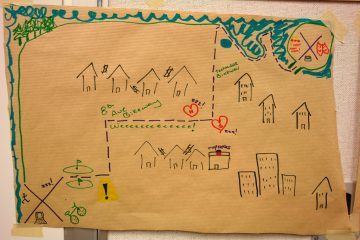
A university classroom is not a static and neutral space. It is a multidimensional and dynamic space where complex interactions occur. Ambrose and colleagues (2010) define classroom climate as “the intellectual, social, emotional, and physical environments in which our students learn” (p. 170). Different aspects of the classroom climate and student development – intellectual development and social identity development in particular – interact with each other to have an impact on student learning and performance.
These elements of the classroom environment are not mutually exclusive but rather interactive with one another, but instructors may attend to the following aspects of student development and classroom climate to consider how each aspect is related to teaching and learning:
Student Development
- Intellectual development – Depending on where students are at in their intellectual development, they could react to course content or a class discussion differently to shape a particular climate in the classroom.
- Social identity development – For college-level students, social identity – identification with certain social groups – is one of the most salient areas of development, and different ways in which each student sees him/herself can create a unique classroom dynamic.
Classroom Climate
- Physical – Physical aspect of the classroom and course delivery, such as classroom type (e.g., an auditorium, a small classroom, a lab), layout (e.g., students sit facing the front of the room, students sit in small groups, everyone sits in a circle), and medium (e.g., face-to-face, online).
- Intellectual – Intellectual aspect of the course and class, such as the course content, class discussion topics, course materials (e.g., textbooks, videos screened in class), and the forms and levels of skills and knowledge that students are expected to demonstrate.
- Social – The social aspect of classroom climate refers to relationships between students (e.g., individualistic vs. team-oriented, or competitive vs. cooperative) and between students and instructor (e.g., the instructor being approachable or authoritative to students) and the social atmosphere of the class (e.g., casual, formal, democratic, inclusive).
- Emotional – The classroom contains various emotions, and the emotions can shift quickly. Students and instructor can have different emotional reactions to course materials and class discussions. These emotions can widely range from discomfort to comfort, from anger to joy, from fear to empowerment, from confusion to excitement, and everything in-between and beyond.
Instructors may not be able to fully predict or control factors that are brought into the classroom or what may happen in the classroom, but they have a great deal of control over, and responsibility for, the classroom environment they create.